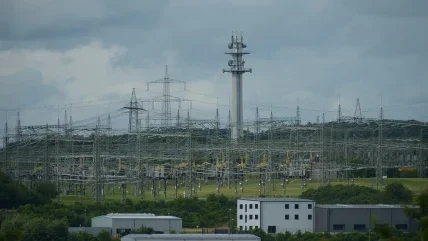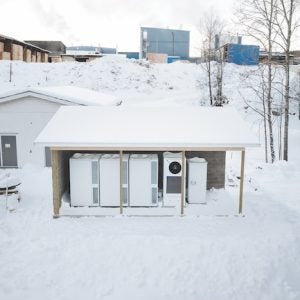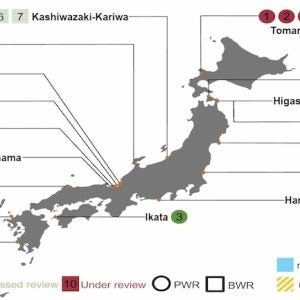
At the end of 2019, GE celebrated what it called “its 100-year anniversary of supplying synchronous condenser solutions to
utility customers and transmission system operators.” As many transmission networks around the world are struggling with weak grid conditions as a result of retiring legacy thermal generation units and the intermittency of wind and solar power, this technology—once considered nearly obsolete—has reinvented itself and now provides critical support to a transforming grid, the company notes.
Installed at strategic intervals along a transmission system, synchronous condensers are electrical rotating equipment (essentially electric motors) that produce or absorb reactive power. The company says its “latest synchronous condenser offerings have undergone many developments since 1919, when GE shipped the world’s first high voltage synchronous condenser to Ontario Hydro in Canada.”
The original 10 MVAr model has evolved over the past century to meet evolving grid demands. GE now offers units ranging from 20 MVAr up to more than 300 MVAr in a single piece of equipment. GE (including predecessor companies, notably Alstom) has supplied more than 200 synchronous condensers to utilities around the globe. Significant technology GE synchronous condenser milestones listed by the company include:
- 1919: first GE air-cooled synchronous condenser, rated +10 MVAr;
- 1928: first GE hydrogen-cooled synchronous condenser, rated +12.5 MVAr;
- 2008: first “modern era” synchronous condenser, installed for the sole purpose of improving “grid reliability”;
- 2011: first synchronous condenser conversion, from a 473 MVA generator to a +360/-210 MVAr synchronous condenser, making it possible to change between generator and synchronous condenser mode, depending on the season;
- 2014: first GE air-cooled synchronous condenser, rated +250 MVAr;
- 2017: largest GE air-cooled synchronous condenser to date, rated +330 MVAr;
- 018: first 625 MVA liquid-cooled turbogenerator converted to synchronous condenser in Europe;
- 2018: high inertia synchronous condensers rated 4 x +250 MVAr, with world’s largest flywheels;
- 2019: installation of the world’s most efficient air-cooled +100 MVAr synchronous condenser.
Synchronous condenser technology has been around almost as long as the electric grid itself to support transmission system reliability, says GE. As the grid became more mature and reliable over the decades, synchronous condensers eventually became regarded as obsolete, with many utilities discontinuing use of the technology. Today, however, as the grid has experienced increasing instability, the technology is undergoing a major comeback with all major synchronous condenser manufacturers reporting higher sales.
“The biggest factor in this renaissance is the changing generation mix, with less traditional thermal energy and more wind and solar energy,” said Fabrice Jullien, global FACTS (flexible AC transmission systems) business leader for Grid Integration Solutions, GE Renewable Energy’s grid business. “Because the best sites for renewable power generation often are not adjacent to where the power is needed, an effective and affordable transmission infrastructure is paramount.” FACTS devices such as SVCs and STATCOMs are good at supplying reactive power quickly. They are less helpful at handling low system inertia, a measure of the stored energy within the mechanical rotating machines, as well as low short-circuit strength in the power grid. Synchronous condensers can help meet these reactive power needs and boost system inertia and short-circuit strength.
Advanced technological improvements are also driving the acceptance of synchronous condensers, GE says. While older analog control systems and rheostats were unable to provide adequate response to dynamic events, the latest machines come with digital field exciter control systems and protective relays. The speed and precision of modern exciters allow the performance of new synchronous condensers to rival their SVC counterparts. Moreover, machine manufacturing and construction have advanced over the years. Slow speed 10- or 12-pole synchronous condensers are a thing of the past, and today’s better-insulated, brushless machines offer significantly higher reliability and availability with reduced maintenance costs.
A recent GE synchronous condenser installation, inaugurated in November 2019, was a 320 MVAr machine for German TSO Amprion at its Uchtelfangen substation, while four units are currently under execution for Italian TSO Terna, rated at 250 MVAr each. These are equipped with large flywheels, providing inertial energy storage of 1750 MWs per unit. Terna has two GE supplied 160 MVAr synchronous condensers at Favara and Partinico (Sicily), which have been running since the end of 2015, and two Ansaldo/ABB supplied 250 MVAr machines in operation on the island of Sardinia.






